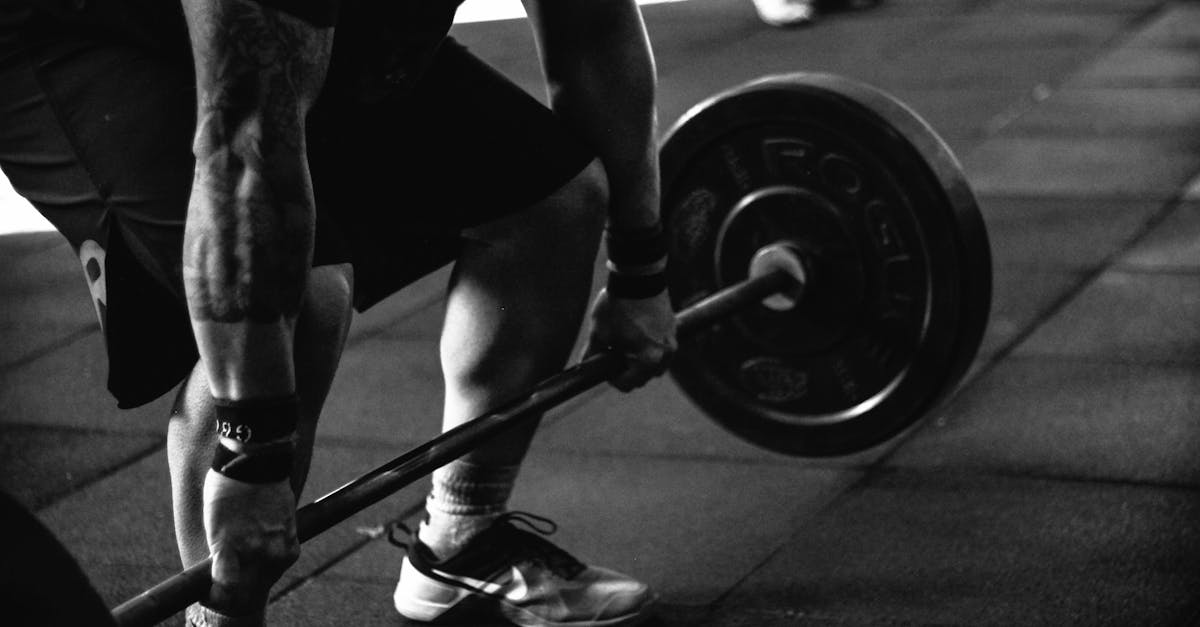Rectus Femoris Pain: Causes, Symptoms, and Treatment
Reclaim Unrestricted Movement: A Comprehensive Guide to Rectus Femoris Pain

Experiencing pain in the upper leg can be frustrating and limit your daily activities. One potential source of discomfort in this region is the rectus femoris, a thigh muscle responsible for extending the knee and flexing the hip. Understanding the causes, symptoms, and treatment options for rectus femoris pain is crucial for managing this condition effectively.
This comprehensive article delves into the intricate world of rectus femoris pain, providing valuable insights into its causes, symptoms, and the latest treatment modalities. We will explore preventive measures and recovery strategies to help you regain optimal function and alleviate your discomfort. So, let’s embark on a journey to conquer rectus femoris pain, empowering you to reclaim your active lifestyle.
In this article, we will delve into the anatomy of the rectus femoris, its role in movement, and various factors that may trigger pain within this muscle. We will explore the different types of rectus femoris pain, ranging from muscle strains to chronic conditions, and discuss their distinct symptoms and treatment approaches. By equipping you with a deeper understanding of your pain, we aim to empower you on your path towards recovery and regaining your mobility.
1. Understanding Rectus Femoris Pain
Understanding Rectus Femoris Pain
The rectus femoris muscle is a key player in the smooth functioning of our lower extremities. Located at the front of the thigh, it plays a crucial role in extending the knee and flexing the hip. When this muscle is affected by pain, it can significantly hinder our ability to perform everyday activities, from walking and running to climbing stairs.
Various factors can contribute to rectus femoris pain, including muscle strain, overuse, and underlying medical conditions. Muscle strain often results from overexertion or improper technique during exercises. Overuse injuries can develop over time due to repetitive activities that strain the rectus femoris muscle. In some cases, underlying medical conditions such as arthritis or nerve entrapment can also lead to pain in this muscle.
Recognizing the symptoms of rectus femoris pain is essential for seeking timely treatment. Common symptoms include pain in the front of the thigh, especially during knee extension or hip flexion activities. Muscle weakness, stiffness, and limited range of motion in the knee or hip may also occur. It’s important to consult a healthcare professional for an accurate diagnosis and appropriate treatment plan tailored to the underlying cause of your pain.
2. Causes of Rectus Femoris Pain

Causes of Rectus Femoris Pain
Rectus femoris pain can stem from various causes, ranging from muscle strain and overuse to underlying medical conditions. Understanding the potential causes is crucial for developing an effective treatment plan.
Muscle strain is a common cause of rectus femoris pain. It occurs when the muscle is overstretched or torn, often due to sudden or forceful movements. Overuse injuries, on the other hand, develop gradually over time due to repetitive activities that strain the muscle. Runners, athletes, and individuals performing frequent knee extensions or hip flexions are more susceptible to overuse injuries of the rectus femoris.
In some cases, rectus femoris pain may be caused by underlying medical conditions. Arthritis, a degenerative joint condition, can affect the hip joint and lead to pain in the rectus femoris muscle. Nerve entrapment, where a nerve becomes compressed, can also cause pain in this region. Additionally, referred pain from other structures, such as the lower back or hip, can sometimes manifest as rectus femoris pain.
Muscle Strain
Muscle Strain: Causes and Symptoms
A muscle strain occurs when the rectus femoris muscle is overstretched or torn, often due to sudden or forceful movements. This can happen during activities such as sprinting, jumping, or performing heavy squats with improper form. Overexertion, particularly when the muscle is not adequately warmed up or conditioned, can also lead to a muscle strain.
Symptoms of a rectus femoris muscle strain can range from mild to severe, depending on the extent of the injury. Common symptoms include pain in the front of the thigh, especially when extending the knee or flexing the hip. You may also experience muscle weakness, stiffness, and reduced range of motion in the affected leg. In severe cases, a muscle strain can cause significant pain and make it difficult to walk or perform everyday activities.
If you suspect you have strained your rectus femoris muscle, it’s important to seek medical attention for proper diagnosis and treatment. Treatment typically involves rest, ice, compression, and elevation (RICE), along with physical therapy to promote healing and restore range of motion.
Overuse Injuries
Overuse Injuries
Overuse injuries occur when the rectus femoris muscle is subjected to repetitive or excessive use, leading to strain and pain. This is common among athletes, runners, and individuals who engage in frequent activities that involve knee extension or hip flexion. Overuse injuries can also result from improper training techniques, inadequate warm-up, or muscle imbalances.
As the rectus femoris muscle is repeatedly stressed, it can become overworked and inflamed, leading to pain and discomfort. Symptoms of an overuse injury may include gradual onset of pain in the front of the thigh, especially during or after exercise. You may also experience muscle soreness, stiffness, and tenderness to the touch. In severe cases, overuse injuries can cause significant pain and interfere with daily activities.
Preventing overuse injuries is crucial, and it involves gradually increasing training intensity, ensuring proper warm-up and cool-down routines, and using appropriate technique during exercises. Strengthening the surrounding muscles, such as the quadriceps and hamstrings, can also help balance the workload and reduce the risk of overuse injuries.
Medical Conditions
Medical Conditions
In some cases, rectus femoris pain can be caused by underlying medical conditions that affect the muscle or surrounding structures. These conditions may include:
- Arthritis: Osteoarthritis and rheumatoid arthritis can affect the hip joint, leading to inflammation and pain that can extend into the rectus femoris muscle.
- Nerve entrapment: The femoral nerve, which runs along the front of the thigh, can become entrapped or compressed, causing pain, numbness, and weakness in the rectus femoris muscle.
- Referred pain: Pain from other structures, such as the lower back or hip, can sometimes be referred to the rectus femoris muscle.
If you suspect that your rectus femoris pain may be caused by an underlying medical condition, it’s important to consult a healthcare professional for proper diagnosis and treatment. Treatment for these conditions will vary depending on the specific cause and may include medication, physical therapy, or surgery.
3. Symptoms of Rectus Femoris Pain
Symptoms of Rectus Femoris Pain
Rectus femoris pain can manifest in various ways, depending on the severity of the underlying cause. Some of the most common symptoms include:
- Pain: Pain in the front of the thigh is the primary symptom of rectus femoris pain. The pain may be sharp, dull, or aching, and it can worsen with activities that involve knee extension or hip flexion, such as walking, running, or climbing stairs.
- Muscle weakness: Weakness in the quadriceps muscle group, which includes the rectus femoris, can make it difficult to extend the knee or perform activities that require knee extension, such as standing up from a seated position.
- Range of motion limitations: Pain and muscle weakness can limit the range of motion in the knee and hip, making it difficult to fully extend the knee or flex the hip.
If you are experiencing any of these symptoms, it’s important to consult a healthcare professional for an accurate diagnosis and appropriate treatment.
4. Treatment Options for Rectus Femoris Pain

Treatment Options for Rectus Femoris Pain
Treatment options for rectus femoris pain vary depending on the severity of the underlying cause and the individual patient’s needs. Conservative treatment methods are typically recommended as a first-line approach, while surgical intervention may be necessary in certain cases.
Conservative Treatment
- Rest: Resting the affected leg and avoiding activities that aggravate the pain can help reduce inflammation and promote healing.
- Ice: Applying ice to the affected area can help reduce pain, swelling, and inflammation.
- Compression: Wearing a compression bandage can help reduce swelling and provide support to the muscle.
- Elevation: Elevating the affected leg above the level of the heart can help reduce swelling and pain.
- Physical therapy: Physical therapy can help improve range of motion, strengthen the muscles around the knee and hip, and restore normal function.
Injections
In some cases, injections may be used to reduce pain and inflammation in the rectus femoris muscle. These injections may include:
- Corticosteroid injections: Corticosteroids are powerful anti-inflammatory medications that can be injected into the affected area to reduce pain and swelling.
- Platelet-rich plasma (PRP) injections: PRP is a concentration of platelets and growth factors that can be injected into the affected area to promote healing and reduce pain.
Surgical Repair
Surgical repair may be necessary in severe cases of rectus femoris pain, such as a complete tear of the muscle. Surgery can involve repairing the torn muscle or removing damaged tissue.
Conservative Treatment
Conservative Treatment
Conservative treatment methods are typically the first line of defense against rectus femoris pain. These non-surgical modalities aim to reduce pain, inflammation, and promote healing without the need for surgery.
The RICE protocol is a cornerstone of conservative treatment. RICE stands for Rest, Ice, Compression, and Elevation. Resting the affected leg and avoiding activities that aggravate the pain can help reduce inflammation and promote healing. Applying ice to the affected area can help reduce pain, swelling, and inflammation. Compression using an elastic bandage can help reduce swelling and provide support to the muscle. Elevating the affected leg above the level of the heart can also help reduce swelling and pain.
Physical therapy is another important aspect of conservative treatment. A physical therapist can assess the severity of the injury and develop a personalized treatment plan to improve range of motion, strengthen the muscles around the knee and hip, and restore normal function. Physical therapy may include exercises to stretch and strengthen the rectus femoris muscle, as well as other exercises to improve knee and hip function.
Injections
Injections
In some cases, injections may be used to reduce pain and inflammation in the rectus femoris muscle. These injections may include corticosteroid injections and platelet-rich plasma (PRP) injections.
Corticosteroid injections are powerful anti-inflammatory medications that can be injected into the affected area to reduce pain and swelling. Corticosteroids work by reducing inflammation, which can help relieve pain and improve range of motion. However, corticosteroid injections should not be used too frequently, as they can weaken the muscle over time.
Platelet-rich plasma (PRP) injections are a newer treatment option for rectus femoris pain. PRP is a concentration of platelets and growth factors that can be injected into the affected area to promote healing and reduce pain. PRP injections are thought to work by stimulating the body’s natural healing processes and promoting the growth of new tissue. While PRP injections have shown promise in early studies, more research is needed to determine their long-term effectiveness.
Surgical Repair
Surgical Repair
Surgical repair may be necessary in severe cases of rectus femoris pain, such as a complete tear of the muscle or chronic pain that does not respond to conservative treatment. Surgery can involve repairing the torn muscle or removing damaged tissue.
Surgical repair of a torn rectus femoris muscle is typically performed arthroscopically, which involves making small incisions around the knee and inserting a camera and surgical instruments. The surgeon will then repair the torn muscle using sutures or anchors. In some cases, a portion of the damaged muscle may need to be removed.
Surgical treatment for chronic rectus femoris pain may involve releasing the muscle from surrounding structures that may be causing irritation or entrapment. The surgeon may also remove any damaged or scarred tissue that is contributing to the pain.
5. Prevention and Recovery
Prevention and Recovery
Preventing rectus femoris pain and promoting recovery after an injury or surgery requires a multifaceted approach. Here are some practical tips:
Prevention
- Warm up properly before exercise: Warming up the muscles before exercise helps prepare them for activity and reduce the risk of injury. Dynamic stretches, such as leg swings and lunges, are particularly effective for warming up the rectus femoris muscle.
- Use proper technique during exercise: Maintaining proper form during exercises can help prevent strain and injury to the rectus femoris muscle. If you are unsure about the correct technique for an exercise, consult with a qualified personal trainer or physical therapist.
- Gradually increase training intensity: Gradually increasing the intensity and duration of your workouts can help strengthen the rectus femoris muscle and reduce the risk of overuse injuries.
- Listen to your body: If you experience pain in your rectus femoris muscle, stop the activity and rest. Pushing through pain can worsen the injury.
Recovery
- Follow your doctor’s or physical therapist’s instructions: After an injury or surgery, it is important to follow the instructions of your healthcare providers. This may include resting the affected leg, applying ice, and performing specific exercises to promote healing and recovery.
- Rest: Rest is essential for allowing the rectus femoris muscle to heal. Avoid activities that aggravate the pain and elevate the affected leg to reduce swelling.
- Ice: Applying ice to the affected area can help reduce pain, swelling, and inflammation.
- Compression: Wearing a compression bandage can help reduce swelling and provide support to the muscle.
- Physical therapy: Physical therapy can help improve range of motion, strengthen the muscles around the knee and hip, and restore normal function after an injury or surgery.
Prevention
Prevention
Preventing rectus femoris pain is essential for maintaining optimal leg function and mobility. Here are some key preventive measures:
Proper Warm-up Techniques:
Warming up the rectus femoris muscle before exercise prepares it for activity and reduces the risk of injury. Dynamic stretches, which involve movement, are particularly effective. Leg swings, lunges, and high knees are excellent warm-up exercises for the rectus femoris.
Stretching Exercises:
Regular stretching helps maintain the flexibility of the rectus femoris muscle and surrounding tissues. Quadriceps stretches, such as the standing quad stretch and the kneeling quad stretch, can help prevent tightness and reduce the risk of strain.
Gradual Progression in Exercise Intensity:
Gradually increasing the intensity and duration of your workouts allows the rectus femoris muscle to adapt and strengthen gradually, minimizing the risk of overuse injuries. Avoid sudden increases in training load and listen to your body for signs of fatigue or pain.
Recovery
Recovery
Recovering from rectus femoris pain requires a combination of rest, rehabilitation exercises, and effective pain management strategies. Here’s a comprehensive guide to facilitate a successful recovery:
Rest:
Adequate rest is crucial for allowing the rectus femoris muscle to heal and repair itself. Avoid activities that aggravate the pain and elevate the affected leg to reduce swelling. Resting the muscle allows it to recover and rebuild without further strain.
Rehabilitation Exercises:
Rehabilitation exercises play a vital role in restoring range of motion, strength, and function to the rectus femoris muscle. These exercises should be performed gradually and under the guidance of a physical therapist or healthcare professional. Quadriceps stretches, knee extensions, and leg presses are commonly included in rehabilitation programs.
Pain Management Strategies:
Managing pain effectively is essential for a comfortable and successful recovery. Over-the-counter pain relievers, such as ibuprofen or acetaminophen, can help reduce pain and inflammation. Ice packs applied to the affected area can also provide pain relief and reduce swelling. In some cases, stronger pain medications or injections may be necessary if the pain is severe.
Quiz
Multiple Choice Questions:
- Which of the following is NOT a common cause of rectus femoris pain?
(a) Muscle strain (b) Overuse (c) Arthritis (d) Hamstring weakness
- What is the primary symptom of rectus femoris pain?
(a) Numbness (b) Pain in the front of the thigh (c) Calf pain (d) Ankle swelling
True/False Questions:
- Rest is an important part of both preventing and recovering from rectus femoris pain.
- Corticosteroid injections can weaken the rectus femoris muscle over time if used too frequently.
- Gradual progression in exercise intensity can help minimize the risk of rectus femoris pain.
Answer Key
Multiple Choice:
- (d)
- (b)
True/False:
- True
- True
- True
